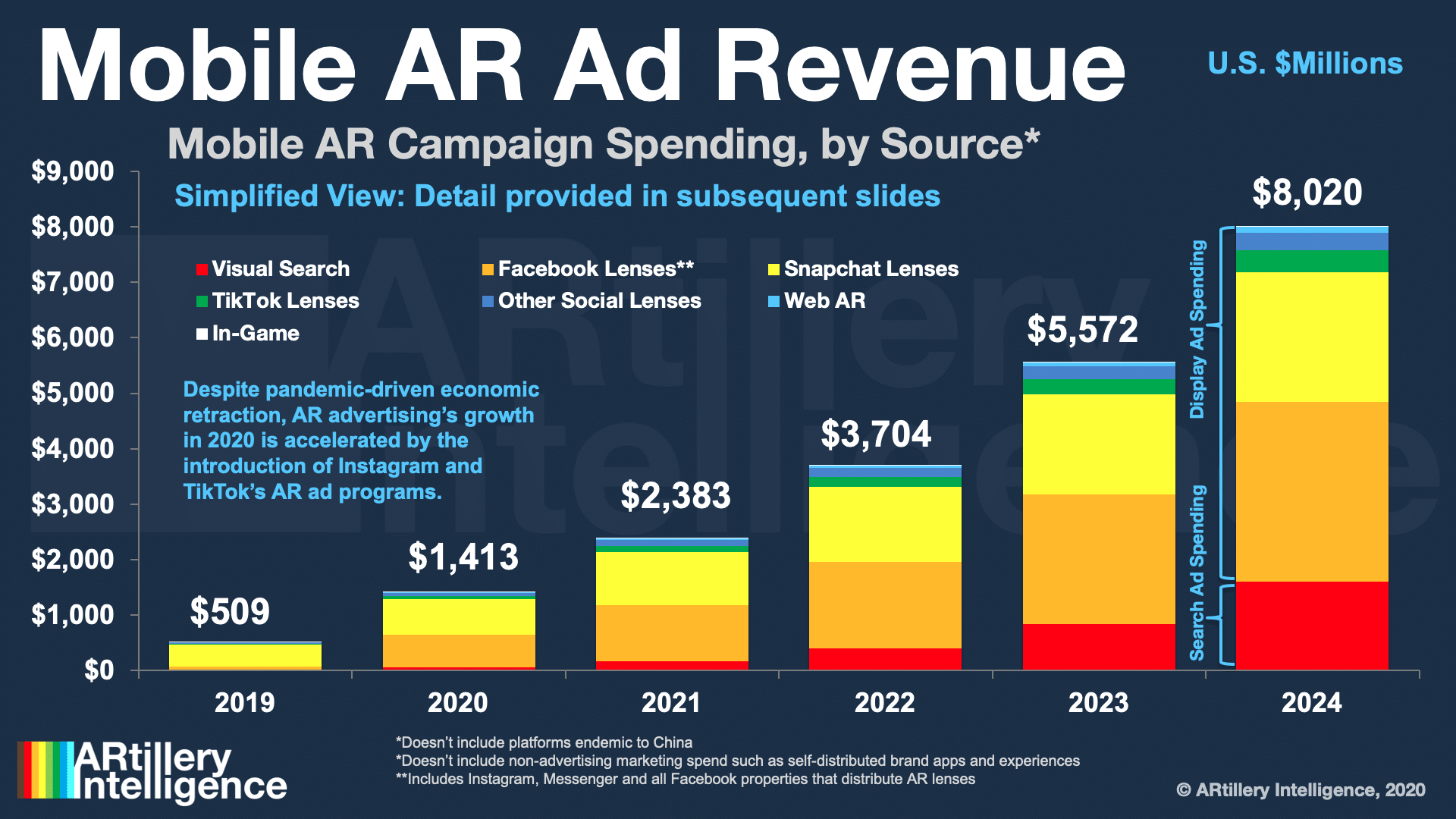
 Data Dive is AR Insider’s weekly dive into select spatial computing figures. Running Mondays, it includes data points and strategic takeaways. For an indexed library of data, reports, and multimedia, subscribe to ARtillery Pro.
Data Dive is AR Insider’s weekly dive into select spatial computing figures. Running Mondays, it includes data points and strategic takeaways. For an indexed library of data, reports, and multimedia, subscribe to ARtillery Pro.
Buried in Facebook’s recent Connect 7 Keynote was an AR data nugget. The company has reached 1.2 million AR experiences and lenses that have been created on its Spark AR platform. These have been experienced by hundreds of millions of users, says Facebook.
Notably, 55 percent of these lens experiences, which Facebook calls AR effects, were created by women. In total, Facebook has 400,000 AR creators from 190 countries on Spark AR. Adding up all of the individual views of these effects, Facebook has exceeded the one-billion mark.

Master Plan
This is notable for Facebook because AR effects represent one key flank in its overall spatial computing master plan. Though eventual endpoints are more about socially-connected AR and VR headsets, the opportunity today is with social lenses, given smartphone ubiquity.
Moreover, just like Apple is doing with ARkit and Snapchat with Lens Studio, mobile AR plants seeds for a smartglasses road map. In other words, mobile-centric lenses can stimulate user demand for 3D experiences and get developers to start thinking spatially (and monetize today).
Or as our research arm ARtillery Intelligence said in a recent report:
Altogether, Facebook has several tracks for spatial computing, which will eventually converge. It has primary VR ambitions to connect the world in more immersive ways (and monetization therein). It’s also working towards AR glasses, “Live Maps” and lots of other spatial research.
Mobile AR lenses are the least sexy of this lot. But they’re key step to get users and developers acclimated to a spatial UX. That will prime the next era of interfaces Facebook is aiming for. Meanwhile, mobile AR — potentially fueled by Instagram — generates real revenue today.
Much of this was validated in the Connect 7 keynote, which unraveled a series of interlocking spatial initiatives. Those include stimulating a network effect in VR with the highly-attractive Quest 2, gaining social insights for AR glasses with project Aria, and lots of deep research.

ARms Race
As Facebook vies for the above targets, the competition continues to heat up. Snapchat has led with AR lenses, given its camera-company focus and camera-forward Gen-Z audience. This has involved enviable engagement levels and monetization around brand lens activations.
We can also examine how Snapchat stacks up to Facebook’s new 1.2 million lens milestone. It’s at a comparable level considering the one-million lenses that it announced at its June partner summit. Given Snapchat’s AR momentum, we can assume that number is larger today.
As for revenue, our research arm ARtillery Intelligence has estimated that Snapchat’s 2020 AR ad revenue will be $651 million (see above). This beats Facebook’s estimated $581 million, though it could lose share over time as Facebook ramps up a multi-app AR approach, including Instagram.
In fact, Instagram could be Facebook’s (not so) secret weapon in the AR advertising arms race. AR fits naturally with Instagram’s camera-forward audience. Moreover, the product discovery and transactional use case that Instagram has cultivated makes AR’s monetization path a clear one.
